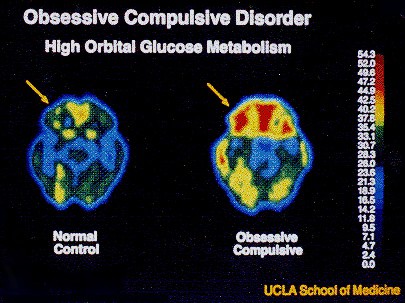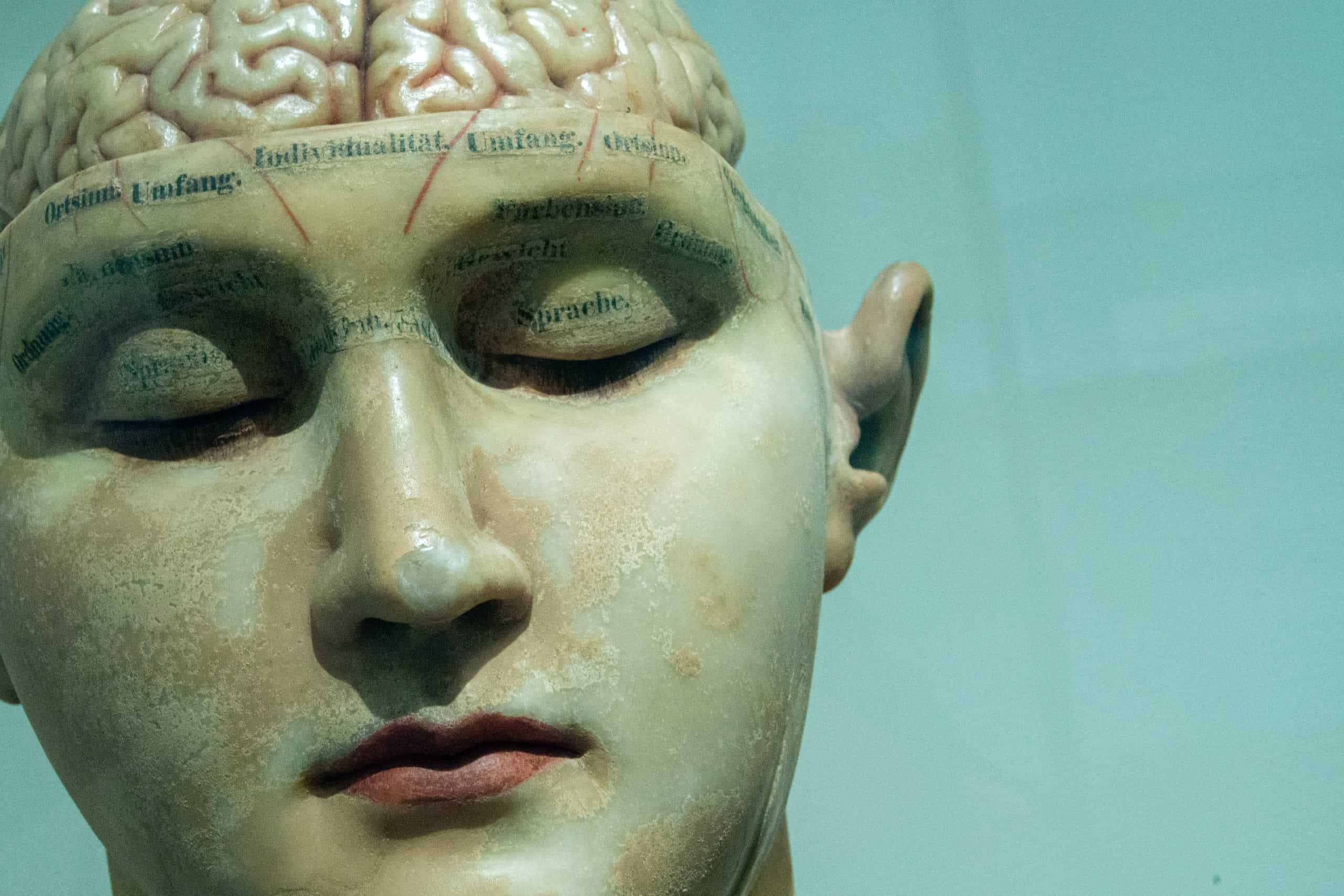An In-Depth Look On How OCD Affects The Brain
Medically Reviewed By – Juliet Gustafson, LMSW

The human brain is truly a marvel. It controls all our thoughts, feelings, emotions and movements. A healthy functioning brain is a blessing, however a faulty one is one of the worst curses any human being could bear. OCD affects the brain and changes the way it’s supposed to function.
This post is all about How OCD Affects The Human Brain.

Ready to reclaim your life, one fearless step at a time? Your personalized path to anxiety-free living starts now!
Unlock your extraordinary future with PanicAway!
Don’t let anxiety define your story. Choose PanicAway, and step into a world bursting with limitless opportunities and unshakable self-assurance. Your personalized path to an extraordinary life is right here!
Meet PanicAway: Your Personal Roadmap to Liberation from Anxiety
Tired of letting anxiety steal the best moments of your life? It’s time to take charge and embrace a world filled with possibilities, free from fear and panic.
Why PanicAway is Your Perfect Ally in this Journey:
- Immediate Relief: Imagine those sleepless nights and crippling panic attacks becoming distant memories. PanicAway arms you with techniques for instant anxiety relief, putting you back in control.
- Empowerment from Within: It’s not about just managing anxiety; it’s about conquering it at its core. Rediscover your inner strength and emerge as a fearless, empowered version of yourself.
- Reclaim Your Freedom: Visualize a life where anxiety no longer dictates your choices. With PanicAway, you’ll savor the freedom to chase your dreams, explore the world, and seize every opportunity with unwavering confidence.
- Proven Success Stories: Join the community of individuals who’ve transformed their lives with PanicAway. You can be the next success story, and we can’t wait to celebrate your triumph!
- Comprehensive Support: You gain access to a treasure trove of resources, from life-changing e-books to enlightening audio guides. Plus, connect with kindred spirits on their own journeys to overcome anxiety.
What Is OCD
From young toddlers to the elderly, Obsessive Compulsive Disorder (OCD) is a mental condition that can affect anyone. OCD manifests when a person engages in a cycle of obsessions and compulsions.
Obsessions are undesired thoughts, impulses, or actions that produce extremely distressing feelings. Compulsions are behaviors someone engages in to squelch obsessions and/or minimize their suffering.
Related Article(s) – Intrusive Thoughts In OCD.
What Does OCD Do To The Brain

Since the early 1980’s, the OCD brain has been under studies by studying brain scans of the patients. Abnormal activity was discovered when compared with someone who does not have OCD. PET scans were first used to detect this groundbreaking discovery. The image above was produced by a PET scan, where the “normal” brain at the top is compared to the “OCD” brain at the bottom.
Breaking down the images further you can see two color categories, warm and cold.
Reds and yellows are the warmer hues, whereas blues and greens are the cooler ones. Warmer colors represent brain regions that are more active. The top and bottom rows of photos may be quickly compared to reveal that while the general patterns are relatively similar, there are some brain regions that are noticeably more active in the OCD brain.
Take The Y-BOCS OCD Test Now!
There are many parts of the brain that appear to be affected by the presence of OCD. Moreover, there are two areas affected the most and can be easily seen when compared, the orbital frontal cortex known as the OFC and the basal ganglia.
On the other hand, areas such as the anterior cingulate cortex and the thalamus have shown evidence that they appear active when symptoms of OCD are triggered.
This is just the tip of the iceberg however one conclusion could be made, there are functional anomalies in several regions of the brain of patients with OCD, and they virtually certainly contribute to symptoms.
Areas Of The Brain Impacted By OCD
What are you waiting for? Download your FREE OCD Worksheets Today!
Orbitofrontal Cortex
The region of the brain just above the orbits(eye sockets) is known as the orbitofrontal cortex.
Basal Ganglia
The basal ganglia, which are positioned at the base of the forebrain, have attracted medical attention for a variety of disorders including OCD that occur with dysfunctions induced by diseases or injuries.
Caudate Nucleus
One of the three basic structures that comprise the basal ganglia is the caudate nucleus.
Anterior Cingulate Cortex
The anterior cingulate cortex (also known as ACC) is located in the brain’s frontal lobes and contains subdivisions that play important roles in cognitive, motor, and emotional processing.
Anterior Thalamus
For episodic memory, the anterior thalamus is a critical component.
Ventral Striatum
The ventral striatum is an important pathway for the basal ganglia.
Functions Of Brain Areas Involved With OCD
Checkout the best OCD books from the past 30 years!
Orbitofrontal Cortex
The Orbitofrontal cortex is located in the prefrontal cortex which is mainly responsible for human behavior such as interactions, judgment, self control and decision making abilities. Furthermore, one of most important functions of the orbitofrontal cortex is the ability to provide focus to one’s attention.
The orbitofrontal cortex is also important in personality formation. It enables people to make deliberate decisions based on their motives. Moreover, this might lead to specific behavioral trends over time (compulsions in regards to OCD).
Basal Ganglia
The basal ganglia are a set of structures in your brain’s core that contain critical functions. The basal ganglia are well recognized for assisting your brain in controlling your body’s actions.
The basal ganglia are an important component of the network of brain cells and nerves that regulate your body’s voluntary motions. They have the ability to accept or reject movement signals sent by your brain, screening out unneeded or inaccurate signals( think of a water filter).
Related Article(s) – Is OCD Treatable Without Medication?
The basal ganglia also processes how you assess goals and hazards. It also interprets impulses that influence your emotions and motivation. That is, it is involved in learning and habit formation, task planning and execution, and other activities.
Because the basal ganglia are involved in processes such as emotions, motivation, and habits, they influence how you learn and how you feel in reaction to what is going on around you. The relief you feel after performing compulsions is a result of the basal ganglia.
Caudate Nucleus
The caudate nucleus is located deep within the brain. It is essential for many higher neurological processes.The caudate nucleus is involved in voluntary movement, learning, memory, sleep, pain, and social behavior, and it is impacted by drug usage.
These deep brain regions are mainly responsible for voluntary(controlled) movement. The caudate nucleus is involved not just in movement planning, but also in learning, memory, reward, motivation, emotion, and romantic engagement.
Anterior Thalamus
The thalamus are responsible for memory processes. These nuclei are believed to be involved in learning and episodic memory.
Anterior Cingulate Cortex
The anterior cingulate cortex is in charge of a variety of cognitive activities, such as emotional expression, attention allocation, and mood control.
7 Functions Of The ACC

Emotions
The ACC, in particular, is concerned with how we deal with or avoid uncomfortable emotions (Compulsions).
Self control
The ACC assists the human brain in processing emotional signals and selecting appropriate emotional reactions in response to those cues(obsessions).
Decision Making
The ACC enables us to examine alternative activities and choose which option will result in the most positive or desirable outcome.
Pain Control
Rather than the sense of pain(physically), this brain region is responsible for how we emotionally respond to the feeling of pain.
Attention
The ACC is also the brain region that helps us pick which tasks or events receive primary attention by assisting our brains in evaluating the best possible outcome.
Anticipation
Cognitive activities such as anticipation enhance blood flow to the ACC.
Identifying Errors
Conflict monitoring is a key ACC function that allows us to monitor or scan for errors in our information processing, which assists us in recognizing the conditions that are most likely to lead to error.
Related Article(s) – Can Art Therapy Help OCD?
Communication Errors To and From The OCD Brain
Over the past couple of decades, studies show that OCD is a result of communication errors to and from the brain. More precise research pinpoints the exact location of the error, between the frontal cortex and the ventral striatum. While the orbitofrontal cortex is responsible for problem-solving, the ventral striatum manages what drives and rewards us.
Typically, the ventral striatum and orbitofrontal cortex work together to solve our problems in a logical manner that rewards us and motivates us to continue making logical, sensible decisions. However, OCD disrupts connection between these two areas of the brain, causing erros and unwanted unregulated signals.
Instead of thinking logically, OCD misleads the brain into believing that performing compulsions and rituals will deter harmful obsessive thoughts. Even though the feelings of relief are temporary the ventral striatum drives OCD patients to repeat compulsions.
Reduction Of Grey Matter In The OCD Brain
According to research, people diagnosed with OCD contain less than normal grey matter in some areas of the brain. These areas of grey matter are responsible for controlling one’s emotions and information processing.
Since OCD reduces the recommended amount of grey matter in the brain, making patients with OCD less able to control their emotions. Low levels of grey matter also changes how you receive information from your brain, shifting focus on “negative thoughts” also known as ruminations in OCD, forcefully.
Related Article(s) – OCD Ordering And Arranging
Lower Levels Of Serotonin In OCD
Scientists are still not sure how OCD reduces serotonin levels in the body. Furthermore, it is apparent that OCD heavily influences serotonin levels. Serotonin is a chemical messenger in the brain that aids with mood and aggressiveness regulation. Typically, serotonin helps you stay calm for a longer period of time.
However, as obsessive-compulsive disorder impacts serotonin levels, patients continually feel uneasy all the time and unable to unwind. You may be more prone to OCD compulsions like compulsive counting, arranging, or frequent hand washing if you are always on guard and thinking about obsessions. This in fact reinforces the obsessive – compulsive cycle.

Ready to reclaim your life, one fearless step at a time? Your personalized path to anxiety-free living starts now!
Unlock your extraordinary future with PanicAway!
Don’t let anxiety define your story. Choose PanicAway, and step into a world bursting with limitless opportunities and unshakable self-assurance. Your personalized path to an extraordinary life is right here!
Meet PanicAway: Your Personal Roadmap to Liberation from Anxiety
Tired of letting anxiety steal the best moments of your life? It’s time to take charge and embrace a world filled with possibilities, free from fear and panic.
Why PanicAway is Your Perfect Ally in this Journey:
- Immediate Relief: Imagine those sleepless nights and crippling panic attacks becoming distant memories. PanicAway arms you with techniques for instant anxiety relief, putting you back in control.
- Empowerment from Within: It’s not about just managing anxiety; it’s about conquering it at its core. Rediscover your inner strength and emerge as a fearless, empowered version of yourself.
- Reclaim Your Freedom: Visualize a life where anxiety no longer dictates your choices. With PanicAway, you’ll savor the freedom to chase your dreams, explore the world, and seize every opportunity with unwavering confidence.
- Proven Success Stories: Join the community of individuals who’ve transformed their lives with PanicAway. You can be the next success story, and we can’t wait to celebrate your triumph!
- Comprehensive Support: You gain access to a treasure trove of resources, from life-changing e-books to enlightening audio guides. Plus, connect with kindred spirits on their own journeys to overcome anxiety.
Conclusion
All in all, it is evident that OCD affects the brain in negative ways. From low serotonin levels, reduction in grey matter and faulty signals to and from the brain are some of the effects OCD has on the human brain.
Summary –
- Brain scans of OCD patients have been used to investigate the OCD brain since the early 1980s.
- While the ventral striatum controls our motivation and rewards, the orbitofrontal cortex is in charge of problem-solving.
- Errors and undesirable uncontrolled signals result from OCD’s disruption of the communication between the orbitofrontal cortex and ventral striatum regions of the brain.
- OCD sufferers are less able to control their emotions because OCD lowers the recommended level of grey matter in the brain.
- Patients with obsessive-compulsive disorder constantly feel anxious and are unable to relax because the disorder affects serotonin levels.
This post was all about How OCD Affects The Human Brain.
References
- EE;, C. N. D. B. (n.d.). Anterior nucleus of the thalamus: Functional organization and clinical implications. Neurology. Retrieved October 6, 2022, from https://pubmed.ncbi.nlm.nih.gov/24142476/
- Huey, E. D., Zahn, R., Krueger, F., Moll, J., Kapogiannis, D., Wassermann, E. M., & Grafman, J. (2008). A psychological and neuroanatomical model of obsessive-compulsive disorder. The Journal of neuropsychiatry and clinical neurosciences. Retrieved October 6, 2022, from https://www.ncbi.nlm.nih.gov/pmc/articles/PMC4476073/
- Maia, T. V., Cooney, R. E., & Peterson, B. S. (2008). The neural bases of obsessive-compulsive disorder in children and adults. Development and psychopathology. Retrieved October 6, 2022, from https://www.ncbi.nlm.nih.gov/pmc/articles/PMC3079445/
- Malcolun, D. E. (n.d.). Obsessive compulsive disorder. Emily Malcoun, Ph.D./ Exposure and Response Prevention for OCD. Retrieved October 6, 2022, from http://www.emilymalcoun.com/ocd.php
- Oh, S., Jung, W. H., Kim, T., Shim, G., & Kwon, J. S. (1AD, January 1). Brain activation of patients with obsessive-compulsive disorder during a mental rotation task: A functional MRI study. Frontiers. Retrieved October 6, 2022, from https://www.frontiersin.org/articles/10.3389/fpsyt.2021.659121/full
- Parmar, A., & Sarkar, S. (2016). Neuroimaging studies in obsessive compulsive disorder: A narrative review. Indian journal of psychological medicine. Retrieved October 6, 2022, from https://www.ncbi.nlm.nih.gov/pmc/articles/PMC5052949/
- Pittenger, C. (2014, October 10). What does an OCD brain look like? Yale School of Medicine. Retrieved October 6, 2022, from https://medicine.yale.edu/news-article/what-does-an-ocd-brain-look-like/



